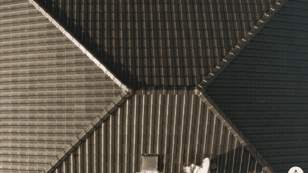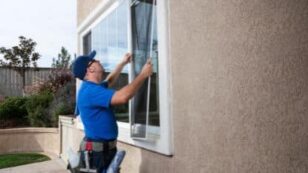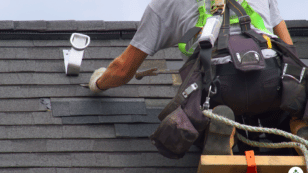
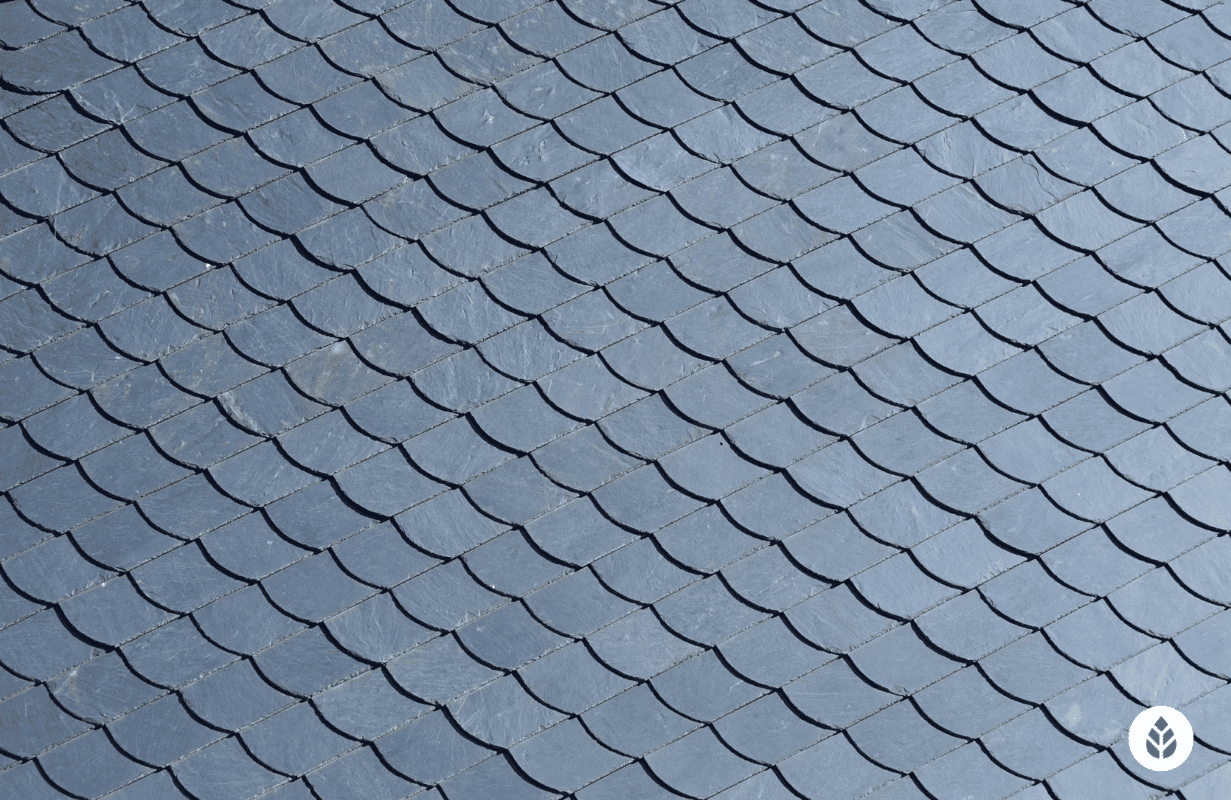
Slate Roof: Usefulness, Costs & Installation Information (2024 Guide)
In this guide on slate roofs, you’ll learn:
- What is a slate shingle roof?
- Is slate roofing any good?
- What does a slate roof cost?
- How do you install a slate roof?
Each product and or company featured here has been independently selected by the writer. You can learn more about our review methodology here. If you make a purchase using the links included, we may earn commission.
What to know about Slate Roofs
Most homeowners are used to seeing asphalt shingle roofs, metal roofs and even clay or tile roofs, but slate roofs are relatively rare these days. However, they’ve persisted throughout history as a popular option for residential roofing as an ecological option despite a heftier price tag.
In this guide, we’ll discuss what slate roofs are, how well they function, and how much they cost to install. We’ll also go over the pros and cons of installing a slate roof on your home.
What Is Slate Roofing?
Slate roof shingles are shingles made out of slate, which is a natural stone that’s high in mica content. The shingles are heavy but extremely durable, and they provide a natural, elegant look to any home on which they’re installed.
Slate shingles first became available in the 1800s and were most popular in America in the mid-to-late-70s. The popularity declined for a few reasons, one of which was the availability of the now-more-popular asphalt roof shingles that you see on most modern homes.
Slate is pulled from quarries, and it’s a naturally long-lasting and eco-friendly building material for roof systems. Incidentally, slate tiles are also a popular choice for flooring.
Is Slate Roofing Good?
Slate roofs offer excellent protection from water, as the material itself is formed from hundreds of thin layers of mostly impermeable stone. Slate is also an excellent natural insulator that performs better than many other roofing materials, so a slate roof is a relatively eco-friendly option.1
Slate roofing shingles are also highly durable, and a slate roof can last about four times as long as an asphalt shingle roof.
The primary downsides to installing a slate roof are the price and the weight. Slate roofs are the most expensive roofing option with the exception of solar shingles. Slate is also quite heavy and can bring about or exacerbate structural issues in some homes.
What Does a Slate Roof Cost to Install?
The average slate roof will cost around $15 to $30 per square foot. For a typical 1,700-square-foot roof, that would come out to between $25,500 and $51,000. For comparison, a standard roof replacement cost with architectural shingles averages around $8,000.
Slate roofs are more expensive than most other types of roofs for a few reasons:
- The materials can be quite expensive, especially if you opt for more decorative types of slate shingles
- The installation process is highly specialized, so you’ll have fewer options for roof replacement companies
- The installation process is rather challenging, so the companies that can handle slate roofs will charge more per square foot than they would for other roof materials
- Walking on a slate roof is more dangerous than on other materials, so additional safety equipment must be used, and the process is more time-consuming
While installing a slate roof will cost you more than installing most other types, slate is also more durable and will outlast virtually any other roof material, especially since the warranty is usually long-lasting. Over time, you stand to save money on roof replacements and roof repair if you can stomach the high up-front cost of slate shingles.

Power Home

Average cost
Pros
- Positive industry reputation
- Lifetime or lengthy warranty
- 10+ years of experience
- Positive customer reviews
- Uses eco-friendly materials
- Well-trained, certified installers
- Variety of roofing styles available
Cons
- Limited variety of roofing materials
- Short or nonexistent warranty
- No financing information available
- Expensive
- Little information available on company website

Aspen Contracting

Average cost
Pros
- Positive industry reputation
- Lifetime or lengthy warranty
- Widespread availability
- 10+ years of experience
- Positive customer reviews
- Financing options available
Cons
- Little information available on company website
How Do You Install a Slate Roof?
Surprisingly, the installation process for slate roof shingles is similar to what you’d find with other materials — you’ll just use slate shingles instead.
Roofers use a slate punch to place holes in the slate shingle and then use roofing nails to nail the shingle to the roof decking, usually with a roofing felt or some other underlayment in between. Shingles are installed from the bottom toward the top to direct runoff appropriately.
The installation process is challenging because slate breaks and cleaves easily. An inexperienced roofer can easily destroy shingles, needlessly increasing the cost of the job.
Unfortunately, real slate roofing is not suitable for a DIY roof replacement job, even for experienced or handy homeowners. Not only is it easy to break the expensive slate shingles, but it’s also challenging to get the heavy slate up to the roof. It’s also hard to install slate, and it’s not always safe to walk on slate shingles once they’ve been placed.
We strongly recommend deferring to an experienced slate roofing contractor for your slate roof installation. Although this comes at a high cost upfront, this is your best bet for a cost-effective and safe solution in the long run.
Pros and Cons of a Slate Shingle Roof
Slate roofs still get installed today, but they are much less prevalent than they were 150 years ago mainly due to a financial constraint. Still, there are some significant benefits to installing slate roofs.
Benefits of Slate Roofs
- Excellent durability: Slate roofs might be prone to cleaving when you’re punching holes in them, but the weather in most parts of the country won’t be able to do much damage to slate shingles. With that being said, installing slate roofs in extreme climates — including those prone to windstorms and tornadoes that can pick up debris — isn’t ideal as despite their weight slate shingles have relatively low wind speed resistance and can do a lot of damage if they come loose.
- Long lifespan: In addition to having excellent durability in the face of most weather conditions, slate roofs also have a rather long lifespan. The average slate roof will last between 70 and 80 years, which is four times as long as the standard asphalt shingle roof.
- Aesthetically pleasing: Although slate roofs aren’t terribly popular these days, they certainly have not gone out of fashion. Natural slate roof tiles are a gorgeous building material that offers a natural appearance and a slight sheen that most homeowners find pleasing.
- Good insulator: It surprises some homeowners to learn that slate is a good insulator. A properly-installed slate roof can help boost your home’s energy efficiency, reducing your carbon footprint and helping to keep heating and cooling bills to a minimum.
- Adds value to your home: Not only do slate roofs improve the curb appeal of your home, but buyers will love the fact that they last so long. Many buyers will be willing to pay more for a home with a slate roof because they can trust that they won’t need to replace it anytime soon.
- Fireproof: Lastly, slate is fireproof, unlike flammable wood roof shingles and fire-resistant asphalt roof shingles.
Cons of Slate Roofs
Of course, no roofing material is perfect, and slate is no exception. There are some downsides to installing a slate roof that might make you decide on another material. The most serious drawbacks include:
- High up-front cost: Aside from solar shingles, slate roofs are the most expensive option available. You can expect to pay three to five times more for slate than you would for asphalt shingles.
- Heavy: Slate is quite heavy, and some structures cannot safely hold up the weight of an entire slate roof. If you have foundation issues or other structural damage, a heavy slate roof might also make them worse.
Difficult to install: The installation process for slate roofs is challenging, so you might struggle to find a roofing company that can do it for you. Even if you can find one, the labor cost will be higher than it would for other roof materials. Additionally, this roof material is not generally considered suitable for DIY installation or repair.
- Makes solar installation more challenging: If you plan to install solar panels on your roof, having slate shingles can present additional challenges that many solar installers might not be able to handle, so solar might not be an option in your area if you have a slate roof.
- Roof repair is expensive: While slate roofs are durable and usually low maintenance, you will find that roof repair generally comes at a higher cost with a slate roof if you do run into any issues.
- Difficult to walk on: Slate can be slick, which makes walking on a slate roof more dangerous than an asphalt or wood roof. If you access your roof for roof cleaning or gutter cleaning regularly, a slate roof might mean you need to forgo that and hire professionals instead.
FAQ: Slate Roof
Below, we’ll answer some of the most common questions we see about slate roofs, their effectiveness and the average cost to install them.
Yes, slate is the most expensive roofing material, with solar shingles currently being the only exception. The average asphalt roof replacement costs around $8,000, but it’s not uncommon for the costs for a new slate roof to reach as high as $50,000 for an equivalently-sized roof replacement.
There are definitely some upsides to having a slate roof, including minimal maintenance being required, high durability, a very long lifespan and sound insulation for your home.
However, the up-front costs of installing a slate roof are much higher than they are for other materials, and the installation process is challenging, expensive and requires a specialized professional to complete the labor.
Ultimately, you’ll have to decide if the pros of having a slate roof outweigh the cons.
Most homeowners agree that the biggest downside to choosing a slate roof is the up-front cost. Slate can cost three to five times more than an asphalt roof, and sometimes the installation costs are even higher.
Another significant downside is the weight. The heavy material makes installation more challenging, and it can also pose issues for your structure.
Aside from slate, roofs are commonly made out of asphalt shingles, which are the most common roofing material. Roofs can also be made of wood shingles, clay tiles, metal, rubber, plastics, and solar shingles.

 233k
233k  41k
41k  Subscribe
Subscribe 
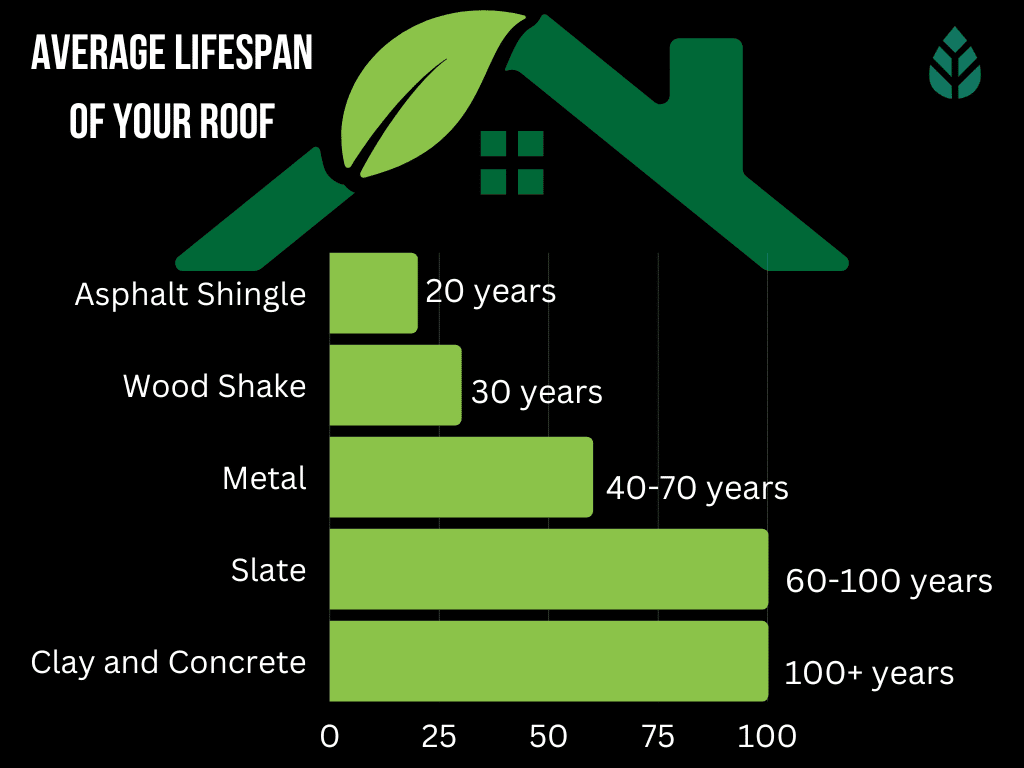
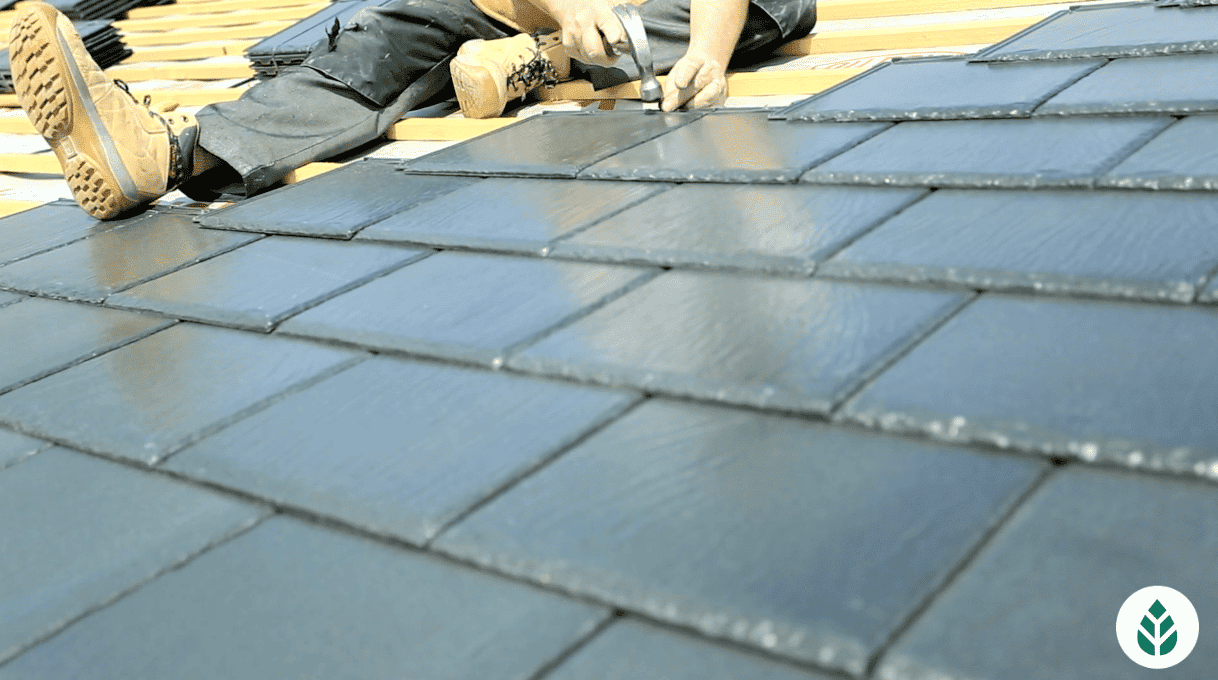 Difficult to install: The installation process for slate roofs is challenging, so you might struggle to find a roofing company that can do it for you. Even if you can find one, the labor cost will be higher than it would for other roof materials. Additionally, this roof material is not generally considered suitable for DIY installation or repair.
Difficult to install: The installation process for slate roofs is challenging, so you might struggle to find a roofing company that can do it for you. Even if you can find one, the labor cost will be higher than it would for other roof materials. Additionally, this roof material is not generally considered suitable for DIY installation or repair.

